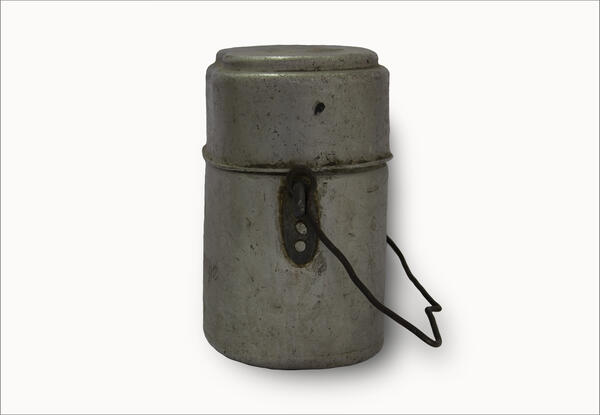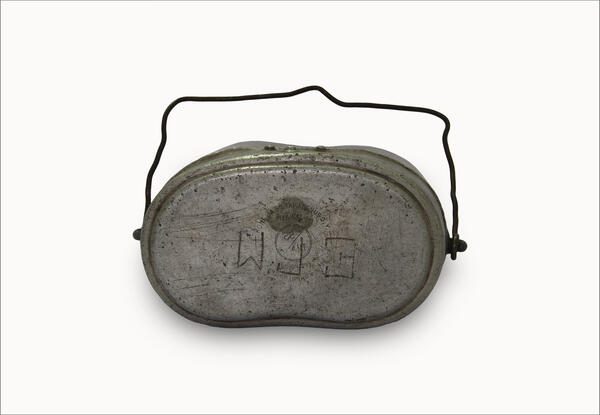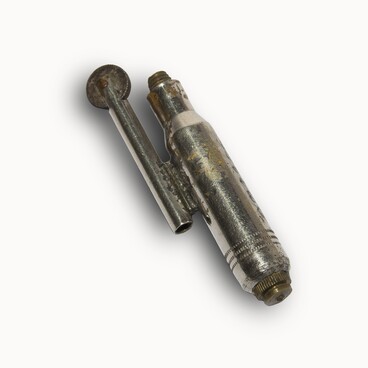The first army cauldrons that were found by scientists during excavations date back to the era of Ancient Greece. The warriors of the Greek army highly valued the copper cauldron, which in those days cost a lot and was universally considered a coveted trophy.
The army cauldron of the Middle Ages was not much different from the cauldrons of the Roman Empire. It was rarely intended for personal use. The barbarian tribes of that era, especially the Celts, used cauldrons for magical rites. The researchers managed to find a silver cauldron of the ancient Druids, which was decorated with gilded tablets depicting the gods.
In the traditions of the Imperial Russian Army, there were cauldrons (by then known as mess tins) of two different shapes: cylindrical (round) and bean-shaped. During the Great Patriotic War, the material was changed from copper to aluminum. Mess tins made of this metal were quite lightweight, were not subject to corrosion, and almost never leaked. However, they also had drawbacks: they were more expensive, and food cooked in them could burn badly.
The cylindrical pan-shaped mess tin of the 1924 model almost completely copied its copper analog from the imperial army. At the time, the Soviet mess tin did not bear yet the two small horizontal lines to mark every half-liter of volume, as was typical for later models.
The lugs of the mess tin were similar in shape to those of the German model, though they had no brands stamped on them. The lugs introduced in 1940 were totally different from German ones. The all-purpose containers were used not only by the military, but also in peaceful life: for hunting, fishing, and hiking.
Later, special combined mess tins began to be made for the airborne troops. They appeared in 1959, but the lugs for them were made similar to those used on the mess tins of the 1940s.
During the Great Patriotic War, mess tins in the Red Army were provided with a cloth cover, which was absent from the tins of the enemy — the German Wehrmacht troops. For medical purposes and for units of Alpine shooters, special increased capacity mess tins were made.
The mess tin from the collection of the Tyumen Museum and Education Association was made in the first half of the 1940s in Finland. It bears an inscription,
The army cauldron of the Middle Ages was not much different from the cauldrons of the Roman Empire. It was rarely intended for personal use. The barbarian tribes of that era, especially the Celts, used cauldrons for magical rites. The researchers managed to find a silver cauldron of the ancient Druids, which was decorated with gilded tablets depicting the gods.
In the traditions of the Imperial Russian Army, there were cauldrons (by then known as mess tins) of two different shapes: cylindrical (round) and bean-shaped. During the Great Patriotic War, the material was changed from copper to aluminum. Mess tins made of this metal were quite lightweight, were not subject to corrosion, and almost never leaked. However, they also had drawbacks: they were more expensive, and food cooked in them could burn badly.
The cylindrical pan-shaped mess tin of the 1924 model almost completely copied its copper analog from the imperial army. At the time, the Soviet mess tin did not bear yet the two small horizontal lines to mark every half-liter of volume, as was typical for later models.
The lugs of the mess tin were similar in shape to those of the German model, though they had no brands stamped on them. The lugs introduced in 1940 were totally different from German ones. The all-purpose containers were used not only by the military, but also in peaceful life: for hunting, fishing, and hiking.
Later, special combined mess tins began to be made for the airborne troops. They appeared in 1959, but the lugs for them were made similar to those used on the mess tins of the 1940s.
During the Great Patriotic War, mess tins in the Red Army were provided with a cloth cover, which was absent from the tins of the enemy — the German Wehrmacht troops. For medical purposes and for units of Alpine shooters, special increased capacity mess tins were made.
The mess tin from the collection of the Tyumen Museum and Education Association was made in the first half of the 1940s in Finland. It bears an inscription,







